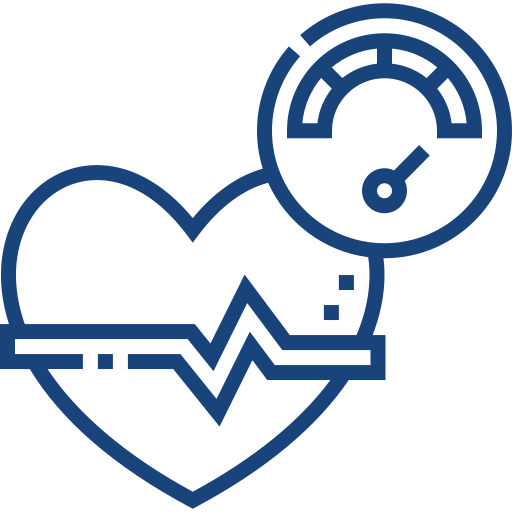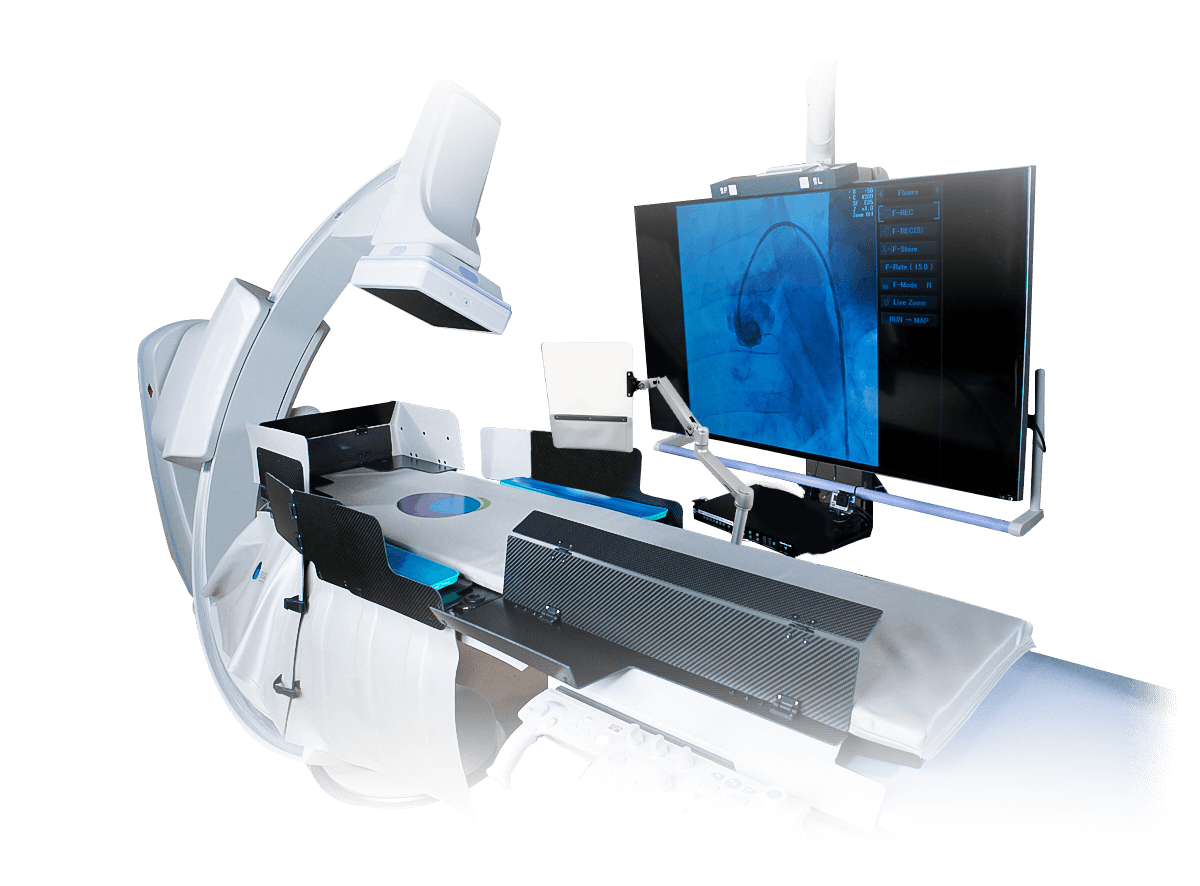Many interventional procedures in the cardiac catheterization laboratory use x-ray fluoroscopy, which requires the continuous x-ray beam to be directed at the patient’s heart. The image is then transmitted to a television monitor so the physician can see the structures and function of the heart during the procedure. Although this imaging modality provides significant diagnostic and therapeutic benefits, scatter radiation from the x-ray beam may pose a safety hazard to cath lab personnel.
During a typical procedure in the cath lab, radiation is deflected from the patient’s body and scattered to all areas of the lab. Throughout their career, interventional cardiologists are exposed to an estimated 50 mSv-200 mSv of ionizing radiation, which equates to 2,500-10,000 chest X-rays. This daily expose to radiation from the angiographic X-ray systems central to their procedures poses a significant risk to cardiologists and cath lab personnel.
The 3C’s: Cancer, Cataracts and Cardiovascular Events
Health effect
![]() Cataracts
Cataracts
 Cancer
Cancer
Skin Carcinoma, Thyroid, Brain
 Cardiovascular
Cardiovascular
Hypertension, hyperlipidemia
Odds ratio (95% ci)
6X Risk
3X Risk
2X Risk
*The Odds ratio is the multiple of the normal ocurrence of each condition in the healthcare personnel not working in x-rays labs. Reference: Andreassi MG, Piccaluga E, Guagliumi G, et al. Occupational health risks in cardiac catheterization laboratory workers. Citc Cardiovasc Interv. 2016, 9:003273.
Every healthcare professional knows that x-rays are a powerful tool that can help explain what’s happening inside the human body, but they also have the unique capability to remove electrons from atoms and molecules in the matter through which they pass. This ionizing activity can alter molecules within the cells of our body, an action that may cause eventual harm, namely cancer. The risk is even greater for those who are exposed to scatter radiation, as this type of radiation has been shown to be more damaging than direct exposure.
Another potential danger of scatter radiation exposure is cataracts. The human ete is a complex and fascinating structure, with lens as one of the most critical components of the eye. It’s a clear, transparent layer of epithelial cells that helps focus light on the retina. Unfortunately, the lens is also susceptible to damage from radiation. When scatter radiation enters the eye, it knocks electrons out of atoms in the lens cells. This damage can inhibit cell division and, ultimately, cause cataracts. That’s why it’s so important for interventional cath lab teams to be aware of the dangers of radiation to the eye and, when working with radiation, always take precautions to protect your eyesight.
In addition to increased cancer risks and developing cataracts, cath lab personnel are also worried about orthopedic issues caused by wearing heavy radiation protection aprons, which take a toll on the spine and can lead to chronic back problems.
Scatter Radiation Matters for Everyone on Your Cath Lab Team
Healthcare workers in labs where patients undergo heart procedures guided by X-rays are at higher risk for cataracts, skin lesions, bone disorders or cancer than other healthcare professionals. A recent study found that interventional cardiology staffers are more likely to experience a range of other health issues, including skin lesions, orthopedic problems, and cataracts. Doctors working in the field are at greater risk than nurses or technicians, and those who have been on the job for more than 16 years are especially vulnerable.
The simple fact is, regardless of your position or role, scatter radiation matters for everyone on your cath lab team.

The EggNest™ is a mobile, compact system that uses state-of-the-art shielding technology to reduce scatter radiation by 91% for the entire interventional team without compromising workflow. The EggNest has been independently tested and proven to minimise scattered dose by up to 91% at 1 meter away from the patient – and it does it without impeding workflow or interfering with image quality.
Speaking of his experience using EggNest, Dr. Vamsi Krishna had this to say: “We were one of the first sites in the U.S to use the EggNest. With the EggNest, the patient is really a kind of cradle that allows protection for not only the physician, but for the entire staff. Most operators won’t notice it is even on the table.”
Our goal is to reduce the scatter radiation exposure of physicians, surgeons, nurses, technicians, and others who use x-ray imaging to perform life-saving diagnostics and therapeutic procedures for patients.
